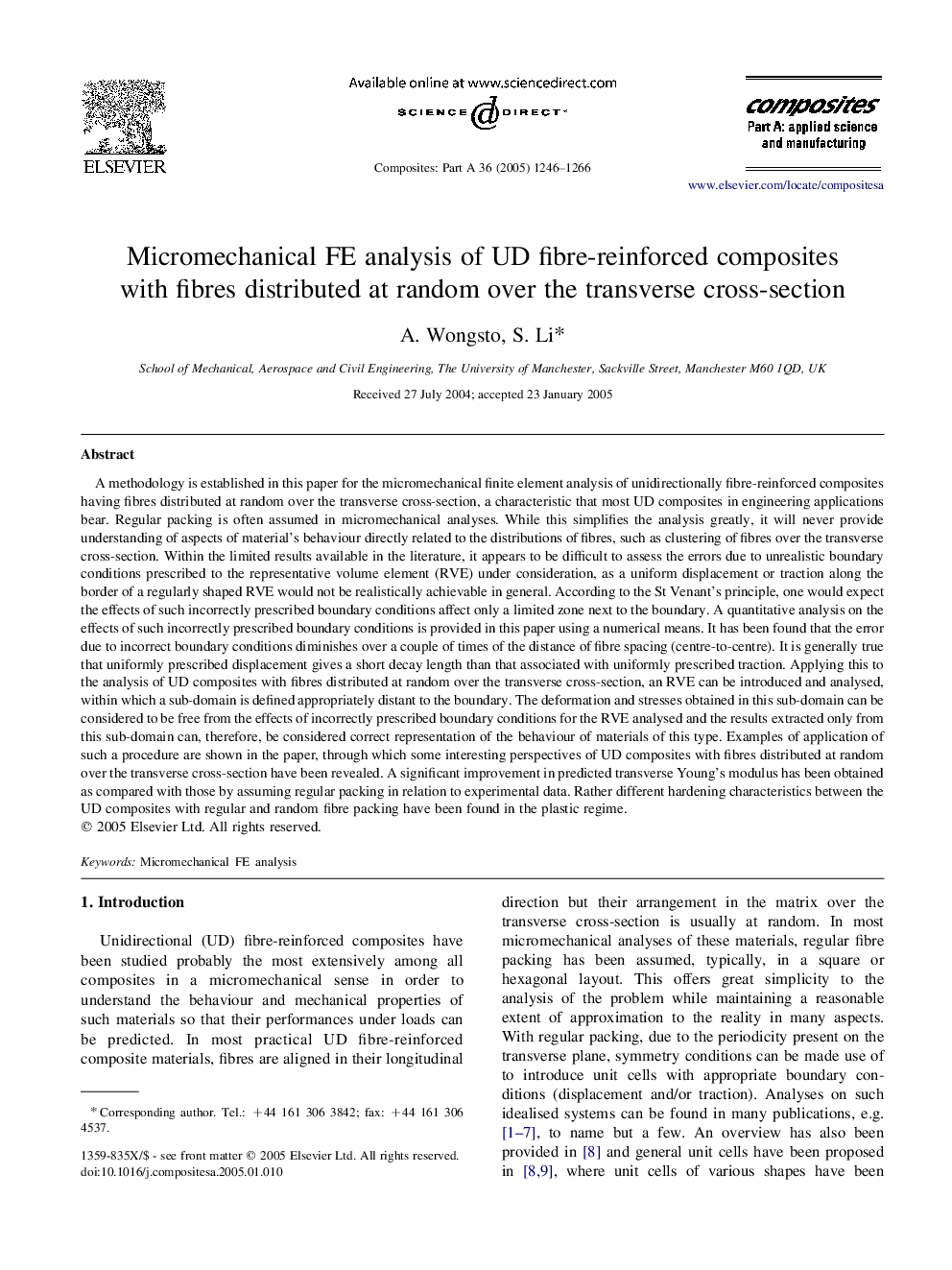| Article ID | Journal | Published Year | Pages | File Type |
|---|---|---|---|---|
| 10627702 | Composites Part A: Applied Science and Manufacturing | 2005 | 21 Pages |
Abstract
A methodology is established in this paper for the micromechanical finite element analysis of unidirectionally fibre-reinforced composites having fibres distributed at random over the transverse cross-section, a characteristic that most UD composites in engineering applications bear. Regular packing is often assumed in micromechanical analyses. While this simplifies the analysis greatly, it will never provide understanding of aspects of material's behaviour directly related to the distributions of fibres, such as clustering of fibres over the transverse cross-section. Within the limited results available in the literature, it appears to be difficult to assess the errors due to unrealistic boundary conditions prescribed to the representative volume element (RVE) under consideration, as a uniform displacement or traction along the border of a regularly shaped RVE would not be realistically achievable in general. According to the St Venant's principle, one would expect the effects of such incorrectly prescribed boundary conditions affect only a limited zone next to the boundary. A quantitative analysis on the effects of such incorrectly prescribed boundary conditions is provided in this paper using a numerical means. It has been found that the error due to incorrect boundary conditions diminishes over a couple of times of the distance of fibre spacing (centre-to-centre). It is generally true that uniformly prescribed displacement gives a short decay length than that associated with uniformly prescribed traction. Applying this to the analysis of UD composites with fibres distributed at random over the transverse cross-section, an RVE can be introduced and analysed, within which a sub-domain is defined appropriately distant to the boundary. The deformation and stresses obtained in this sub-domain can be considered to be free from the effects of incorrectly prescribed boundary conditions for the RVE analysed and the results extracted only from this sub-domain can, therefore, be considered correct representation of the behaviour of materials of this type. Examples of application of such a procedure are shown in the paper, through which some interesting perspectives of UD composites with fibres distributed at random over the transverse cross-section have been revealed. A significant improvement in predicted transverse Young's modulus has been obtained as compared with those by assuming regular packing in relation to experimental data. Rather different hardening characteristics between the UD composites with regular and random fibre packing have been found in the plastic regime.
Related Topics
Physical Sciences and Engineering
Materials Science
Ceramics and Composites
Authors
A. Wongsto, S. Li,
